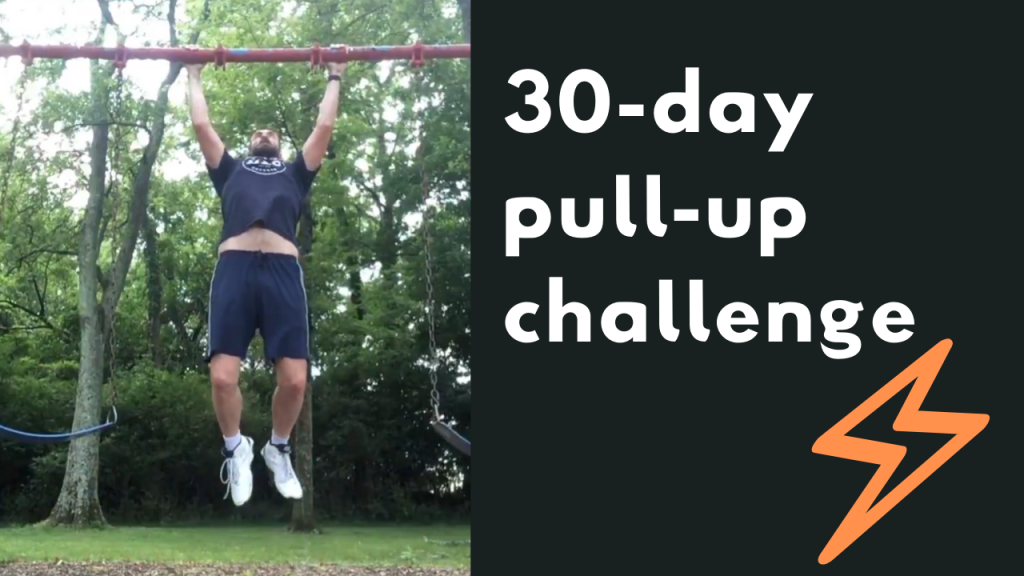How many pull-ups do you think you can do? Do you know? Or is it a vague amount, like “several”?
I thought I could do “several” pull-ups. So I tested…
A little over 30 days ago, I could do a strong pull-up. One. Single. Strong. Pull-up. Then I was done. Workout over. I couldn’t do anymore.
As a guy who has been working out fairly hardcore for about a year, the fact I could only do one pull-up disheartened me. I doubted that all the weightlifting I’d done was making me truly, practically, use-ably strong.
The pull-up is a practical maneuver. It’s useful for all kinds of things like… uhhh… climbing a tree, escaping would-be attackers by scaling a non-chain-link fence, pulling oneself unto a boat, hanging on the rim for a cool finish after dunking a basketball… You get the idea.
If I couldn’t really do this simple, practical maneuver, was I really, truly getting strong? Sure, I had improved on the amount of weight I could move on a lat pull-down… but that was of little use when trying to haul myself over the side of a boat or when needing to escape those would-be attackers.
If you want to run fast, you must practice running fast.RUNNING PROVERB
And then, I remembered something I often repeated in my days as a running coach: If you want to run fast, you must practice running fast. It’s a simple proverb noting that we get better at doing something by doing the actual thing we hope to do.
If I want to be practically strong by doing more pull-ups, then I need to do pull-ups.
Doing pull-ups and push-ups every day
I set out to do pull-ups and push-ups everyday. Though I could already do more than one push-up, I included the push-ups for balance. For each pull activity we undertake, we should balance with a push activity, too.
I didn’t just try maxing out at pull-ups and push-ups every day. Instead, I set a plan for training:
- Max test the first day of each week: how many pull-ups and push-ups could I do before muscle failure.
- Day two: Do fives sets of half my max.
- Day three: Do some kind of modified activity, like hammer-grip pull-ups and incline push-ups.
- Day four: Rest or modified activity–like door pulls and chair dips.
- Day five: Five sets, half max.
- Day six: Test for max
- Day seven: Rest
What happened?
Exponential improvement happened. By week two, I could do two pull-ups. That was 100% improvement!
And that was certainly enough to keep me going. I stayed on the program without interruption. The great thing about push-ups and pull-ups is they can be done nearly anywhere. When I went for a visit to my parents house, I used the support truss in their basement for a pull-up bar and kept my routine going–even on vacation.
So here’s what happened when I got to day 30:
How many could I do after 30 days?
To cut to the chase: I did six pull-ups on day 30. Not a crap ton… but still an exponential improvement from where I started.
What now?
I’m not done. But I’m not doing pull-ups and push-ups every day, either. Instead, I’ve made them both part of my regular training schedule. In fact, when I don’t have a bench press available, push-ups have become my primary push exercise. Now I’m hitting each exercise twice per week. I’ll update on how that influences my progress!
If you’re looking for other ways to simply ramp up your strength, check out the at-home upper body and at-home lower body workouts I’ve done.
Ryan Dunn has a bunch of certificates on his desk. A few are awards for content production and marketing. Ryan still seeks to achieve. He would like to be a faster runner and higher jumper. He wants to read more books while somehow watching all the Cubs games possible. He would like to produce more written words–though not in this bio.


